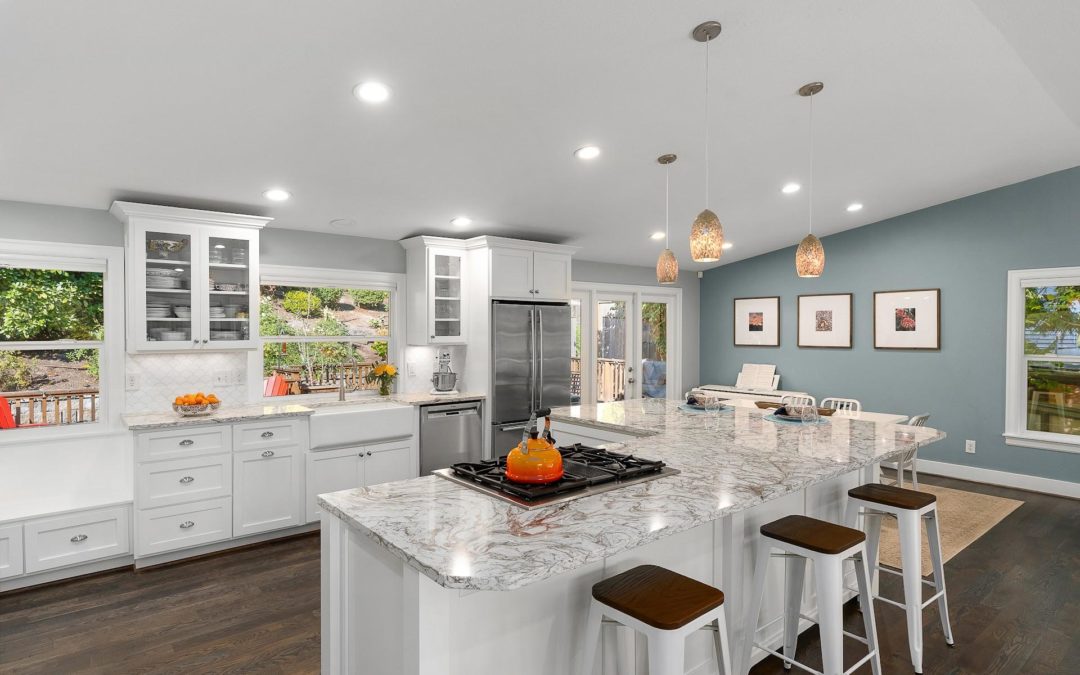Starting a kitchen remodel can be both thrilling and overwhelming. The kitchen is often seen as the core of any household, and crafting an area that is practical yet fashionable can greatly improve your everyday living experience. However, with so many decisions to make and trends to consider, it's common to stumble into significant errors that could impact your budget, timeline, and overall satisfaction with the finished project.
In this guide, we will explore five frequent errors to watch out for during your kitchen renovation. From managing your budget wisely to choosing the correct paths in aesthetics and usability, we'll help you navigate the process and make certain your kitchen makeover is just as you imagined. Whether you're planning a minor refresh or a complete remodel, being informed can prevent potential headaches and costs down the road.
Essential Organizational Steps for The Kitchen Renovation
The first step in your kitchen renovation process is to clarify the goals and budget. Spend some time to visualize what you want the new space to offer. Are you looking for enhanced functionality, improved storage solutions, or simply a refreshed aesthetic? Also, set a budget that outlines how much you can allocate, including allowances for unforeseen expenses that may arise during the renovation period.
Next, gather inspiration and create a design blueprint that reflects the vision. Utilize resources such as design magazines, websites, and social media platforms to explore the newest kitchen design trends for 2024. This will assist you identify your preferred styles, color schemes, and materials. Consider whether you prefer modern or classic elements, and reflect on how these choices will impact the overall flow and feel of your kitchen.
Once you have a distinct vision and design in mind, it's time to develop a timeline for the renovation. Arrange the necessary steps in a logical order, from demolition to installation. This will aid you stay on track and make certain that each phase of the project is completed efficiently. If you are hesitant about managing the timeline or the renovation process itself, consider whether DIY is suitable for you or if engaging a professional is a more suitable option.
Cost-Effective Remodeling Advice
As you embark on a cooking space renovation, the first step involves establishing a realistic financial plan. Evaluate your current kitchen and determine areas that require urgent attention compared to those that can wait. custom kitchen design will help you set priorities for spending and allocate funds efficiently. Consider utilizing cost-effective materials that mimic more expensive options, such as laminate countertops that imitate granite or quartz, which can provide you a luxurious appearance without breaking the bank.
An additional useful strategy is to refinish current cabinets instead of replacing them. Just painting or staining your cabinets can significantly change the look of your cooking area at a small portion of the cost. Incorporating open shelving in place of upper cabinets can also produce a more spacious feel while saving money on cabinetry. Additionally, be sure to consider DIY opportunities for smaller projects, as these can greatly lower labor costs and adding a personal touch to your renovation.

Finally, watch for sales and discounts on appliances and fixtures. Many retailers offer seasonal promotions that can lead to significant savings. If you are flexible with your appliance choices or willing to wait for the right sale, you can greatly cut down on your overall costs. Remember, careful planning and strategic decision-making can assist you realize a beautiful kitchen remodel that fits within your financial constraints.
Regular Pitfalls to Avoid During Renovating
One of the most major mistakes householders make during a kitchen renovation is miscalculating the budget. It's easy to get caught up in the excitement of picking fashionable fixtures and finishes, which can lead to overspending. To steer clear of this pitfall, create a detailed budget that includes all aspects of the renovation, from materials and labor to unexpected costs that may arise during the project. Always leave a cushion in your budget for unexpected events, as this can save you from monetary strain down the line.
Another typical error is overlooking the significance of kitchen layout and functionality. Many people focus primarily on appearance and forget to consider how they will use the space on a daily basis. A badly designed kitchen can lead to difficulty when cooking or hosting. Make sure to follow the work triangle principle (which suggests the sink, stove, and refrigerator should be in a triangular layout) and think about how you flow within your space. Spending time to plan an efficient layout will boost the functionality of your kitchen.
To wrap up, ignoring lighting can significantly impact the overall atmosphere of your renovated kitchen. Many homeowners underestimate how essential lighting is for both ambiance and usability. Instead of depending only on overhead lights, consider adding a mix of task, ambient, and accent lighting. Adding under-cabinet lights or chic pendant fixtures can create a inviting atmosphere while ensuring you have plenty of light for food preparation tasks.
